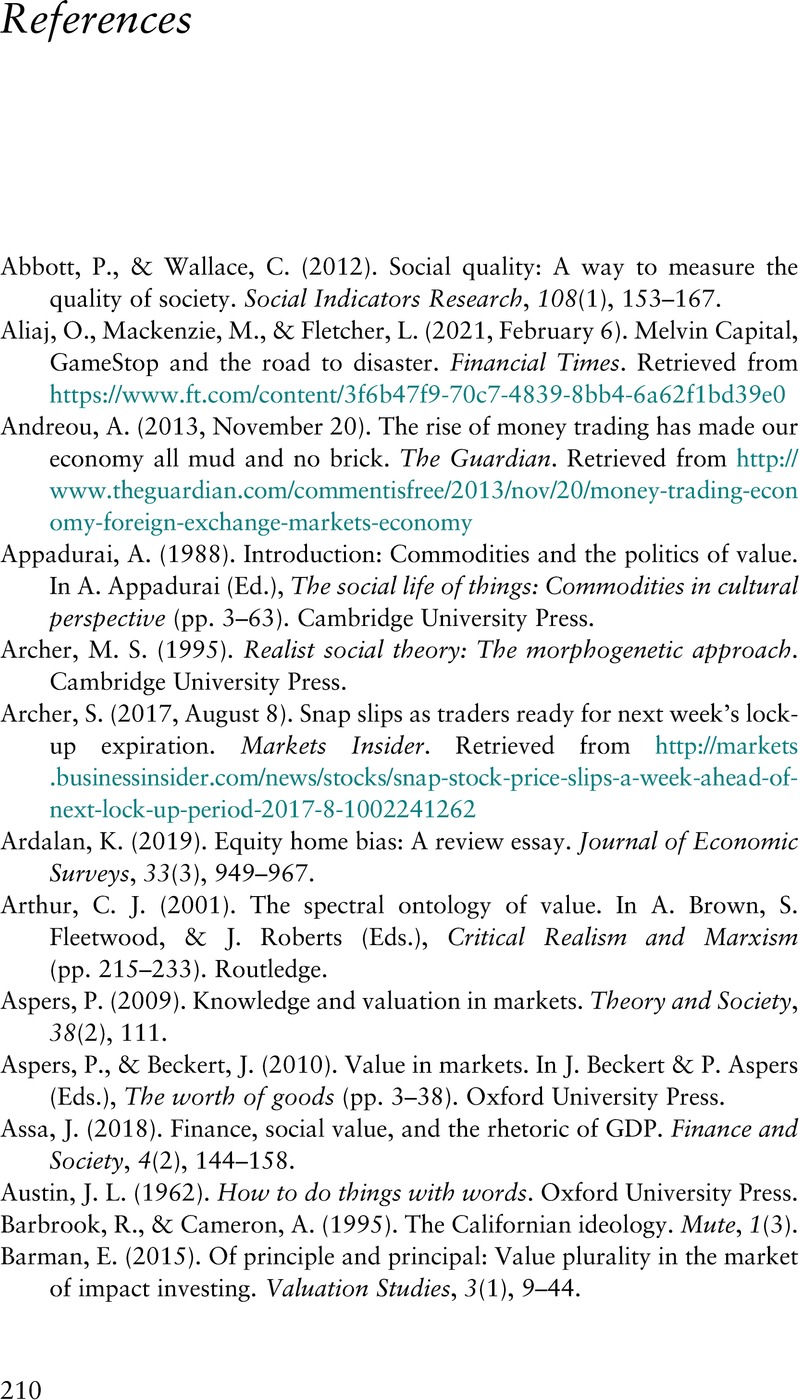Book contents
- Inventing Value
- Inventing Value
- Copyright page
- Dedication
- Contents
- Figures
- Acknowledgements
- 1 Introduction
- 2 How (Not) to Think about Value
- 3 Value and Price
- 4 Theories of Financial Value
- 5 Valuation Structures
- 6 Venture Capital and Unicorns
- 7 Bitcoin
- 8 Structured Subprime Securities
- 9 Conclusion
- References
- Index
- References
References
Published online by Cambridge University Press: 28 July 2022
- Inventing Value
- Inventing Value
- Copyright page
- Dedication
- Contents
- Figures
- Acknowledgements
- 1 Introduction
- 2 How (Not) to Think about Value
- 3 Value and Price
- 4 Theories of Financial Value
- 5 Valuation Structures
- 6 Venture Capital and Unicorns
- 7 Bitcoin
- 8 Structured Subprime Securities
- 9 Conclusion
- References
- Index
- References
Summary

- Type
- Chapter
- Information
- Inventing ValueThe Social Construction of Monetary Worth, pp. 210 - 225Publisher: Cambridge University PressPrint publication year: 2022



